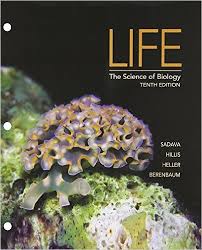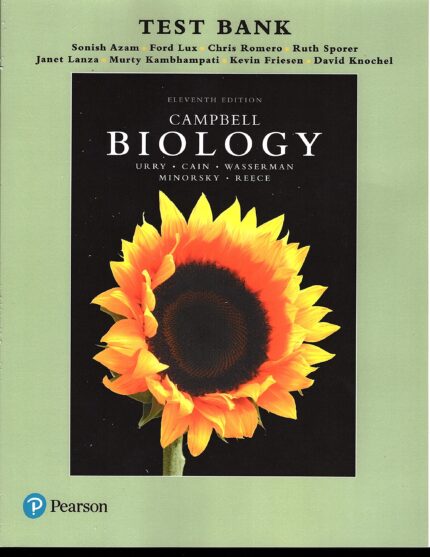Lehninger Principles of Biochemistry 6th Edition By David L. Nelson – Test Bank
Multiple Choice Questions
- Amino acids
Page: 72 Difficulty: 1 Ans: C
The chirality of an amino acid results from the fact that its α carbon:
- has no net charge.
- is a carboxylic acid.
- is bonded to four different chemical groups.
- is in the l absolute configuration in naturally occurring proteins.
- is symmetric.
- Amino acids
Page: 72 Difficulty: 2 Ans: B
Of the 20 standard amino acids, only ___________ is not optically active. The reason is that its side chain ___________.
- alanine; is a simple methyl group
- glycine; is a hydrogen atom
- glycine; is unbranched
- lysine; contains only nitrogen
- proline; forms a covalent bond with the amino group
- Amino acids
Page: 72 Difficulty: 1 Ans: C
Two amino acids of the standard 20 contain sulfur atoms. They are:
- cysteine and serine.
- cysteine and threonine.
- methionine and cysteine
- methionine and serine
- threonine and serine.
- Amino acids
Page: 75 Difficulty: 1 Ans: A
All of the amino acids that are found in proteins, except for proline, contain a(n):
- amino group.
- carbonyl group.
- carboxyl group.
- ester group.
- thiol group.
- Amino acids
Pages: 75–76 Difficulty: 3 Ans: C
Which of the following statements about aromatic amino acids is correct?
- All are strongly hydrophilic.
- Histidine’s ring structure results in its being categorized as aromatic or basic, depending on pH.
- On a molar basis, tryptophan absorbs more ultraviolet light than tyrosine.
- The major contribution to the characteristic absorption of light at 280 nm by proteins is the phenylalanine R group.
- The presence of a ring structure in its R group determines whether or not an amino acid is aromatic.
- Amino acids
Page: 77 Difficulty: 2 Ans: A
Which of the following statements about cystine is correct?
- Cystine forms when the —CH2—SH R group is oxidized to form a —CH2—S—S—CH2— disulfide bridge between two cysteines.
- Cystine is an example of a nonstandard amino acid, derived by linking two standard amino acids.
- Cystine is formed by the oxidation of the carboxylic acid group on cysteine.
- Cystine is formed through a peptide linkage between two cysteines.
- Two cystines are released when a —CH2—S—S—CH2— disulfide bridge is reduced to —CH2—SH.
- Amino acids
Page: 77 Difficulty: 2 Ans: A
The uncommon amino acid selenocysteine has an R group with the structure —CH2—SeH (pKa ≈ 5). In an aqueous solution, pH = 7.0, selenocysteine would:
- be a fully ionized zwitterion with no net charge.
- be found in proteins as d-selenocysteine.
- never be found in a protein.
- be nonionic.
- not be optically active.
Related Test Bank













Reviews
There are no reviews yet.